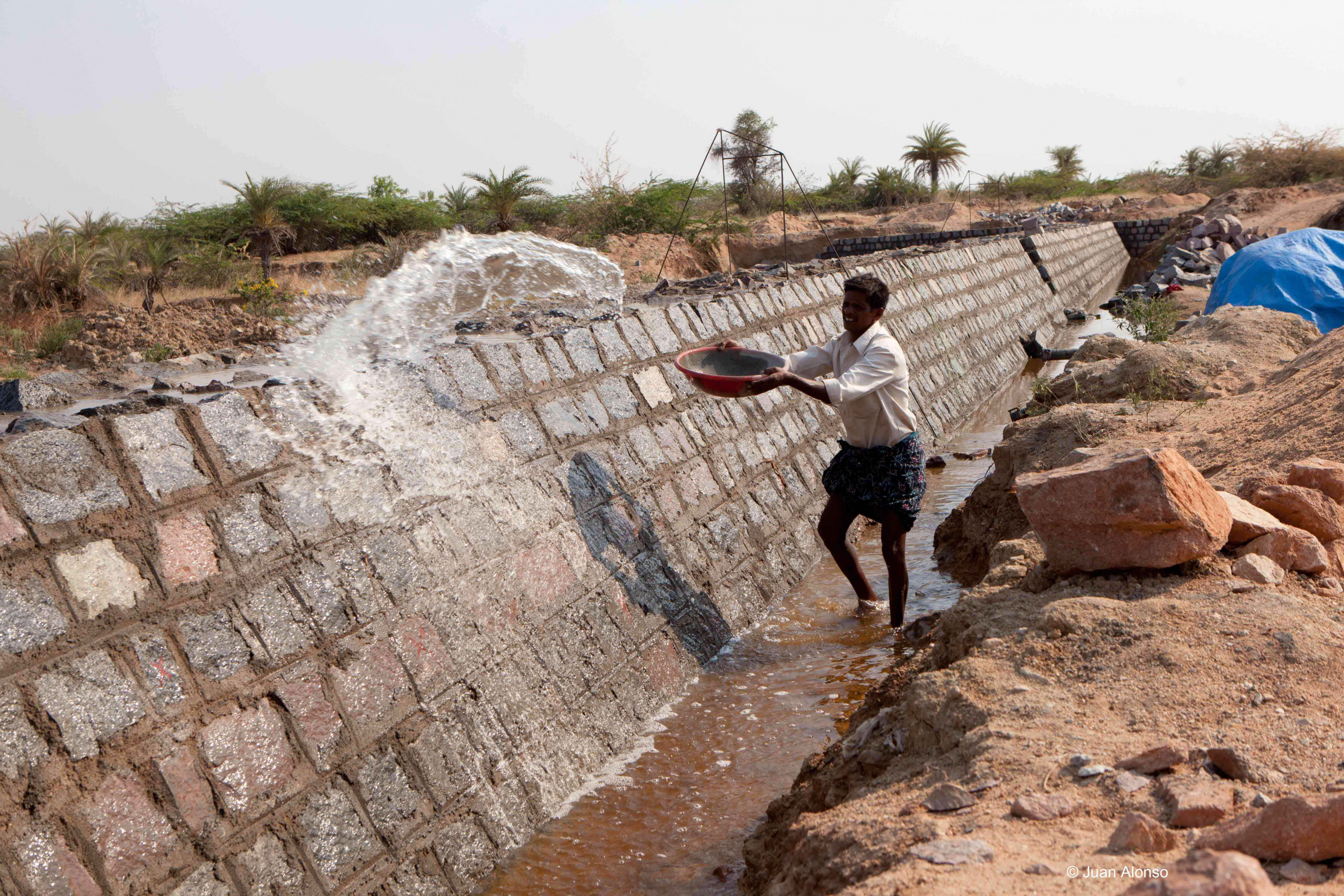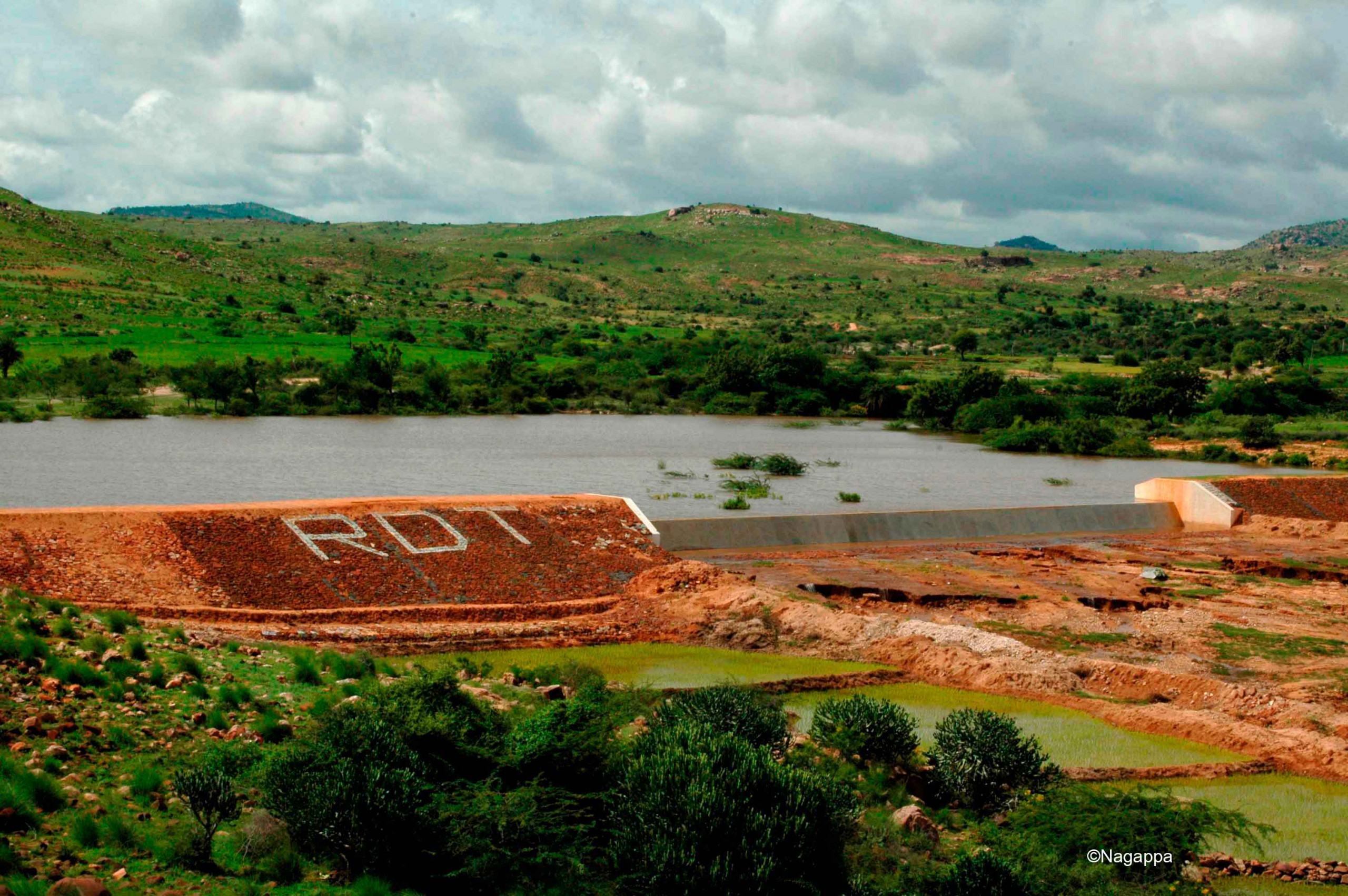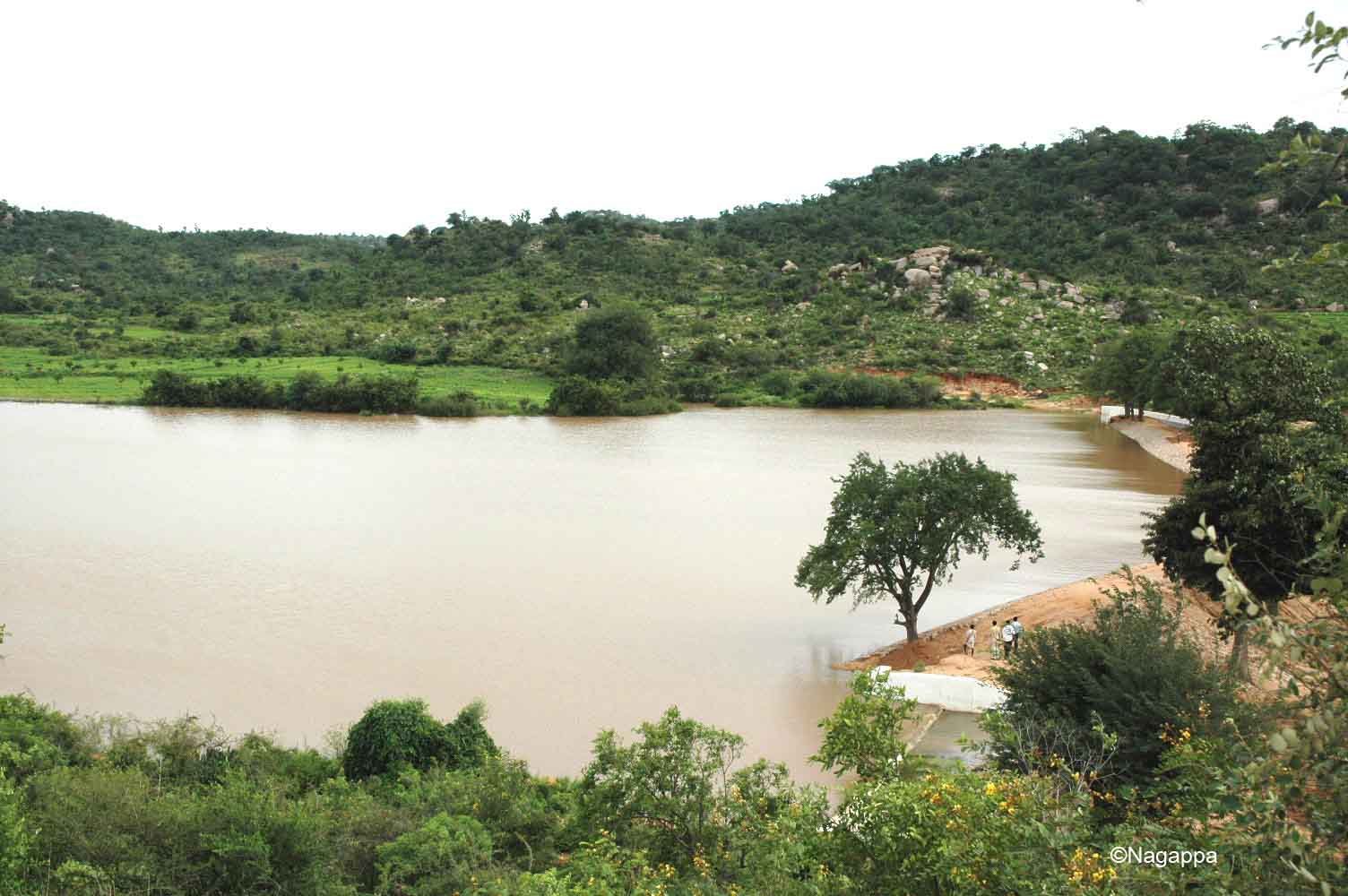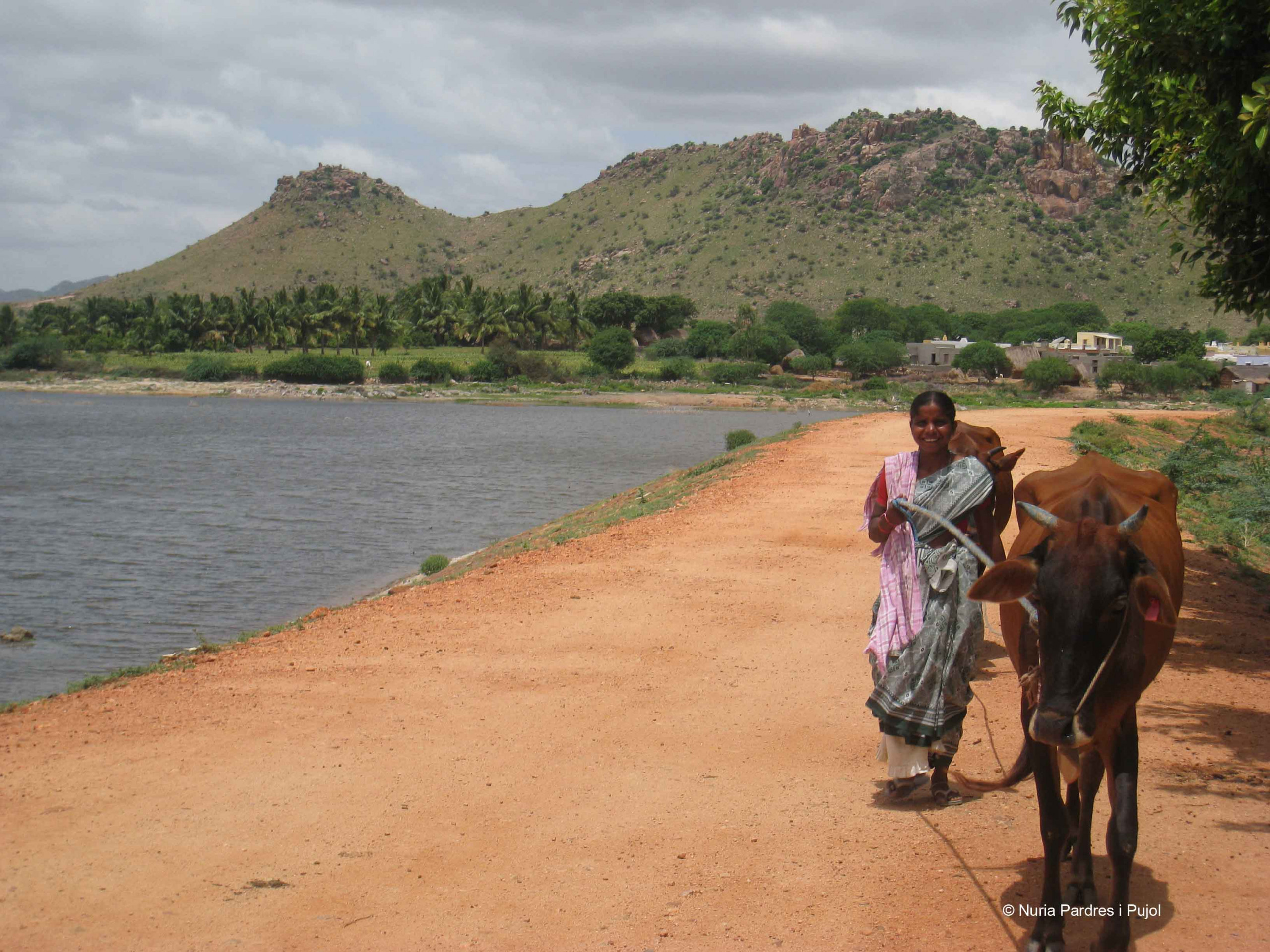Villages of Settipalli, region of Madakasira, and D.K.Thanda4, region of Kalyandurg, India
In collaboration with

From July 2019 to July 2020
We have provided up to 81,300 m3 of impounded water for irrigation, crop diversification and regeneration of the water table to stop desertification and improve the environment in an area where 619 farming families suffering from drought live.
Objectives
- Build two reservoirs with 33,000 m3 and 48,300 m3 capacity in Settipalli and D.K.Thanda4, respectively, to collect rainwater and supply 26 surface wells.
- Irrigate 11.13 hectares and 49.37 hectares in Settipalli and D.K.Thanda4, respectively.
- Allow crop diversification and recharge aquifers.
Beneficiaries
102 direct
- In Settipalli: 5 farming families (24 people)
- In D.K.Thanda4: 21 farming families (87 people)
2,306 indirect
- In Setttipalli: 394 families (1,603 people)
- In D.K.Thanda4: 199 families (703 persons)
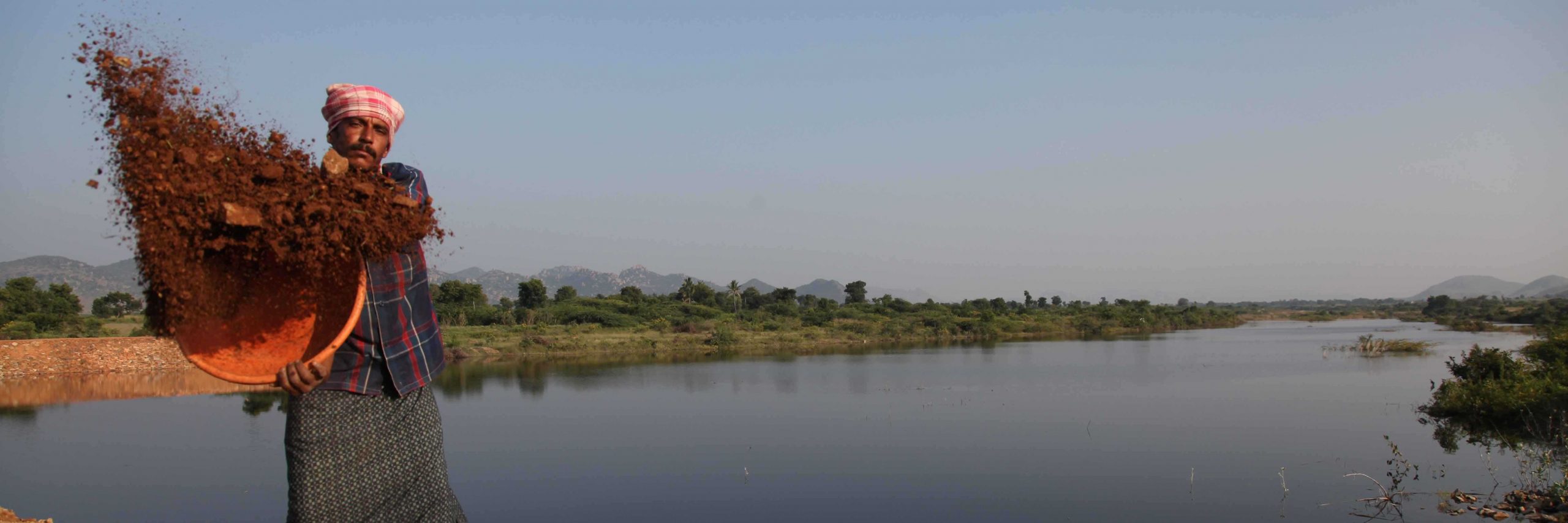
On the ground
There is a situation of chronic drought in an agricultural land impoverished by monoculture that depends on the monsoons for subsistence.
In the Indian states of Andhra Pradesh and Telangana, where the most vulnerable population groups live, farmers are constraint in their everyday lives by the chronic drought affecting the area and by the social inequalities they still have to face.
The inhabitants of this region have fought their entire lives against an endemic hardship: the sterility of the land. They have also had to face low levels of water in the water tables and unpredictable monsoons that lead to uncertain crops in an area in which the negative consequences of climate change are already present.
The impoverishment of those who live off the land is the main cause of their abandonment and migration to large cities, where they end up overcrowded in slums.
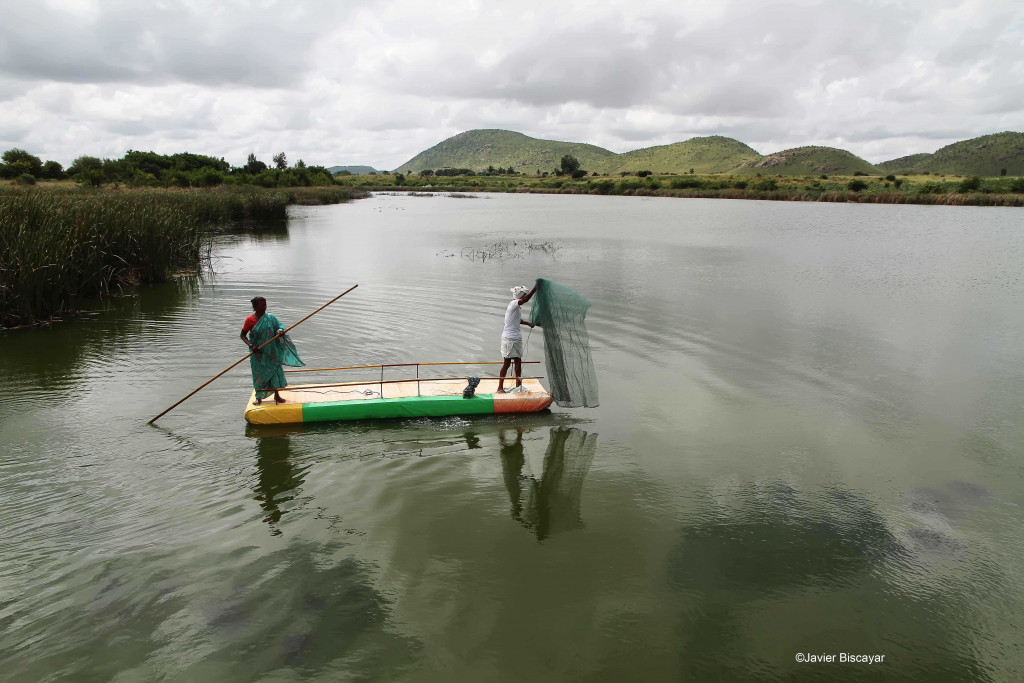
In detail
Reservoirs are built on the land handed over by farmers who provide their support as unskilled labor during the construction.
The first step to build a reservoir is to carry out a geological survey that confirms the existence of aquifers in the subsoil. This type of structure is generally built in valleys, at their lowest levels where the slopes converge and the bed of valley streams narrow, leaving space for a large floodable area.
If there are small slopes in the chosen area, earth slopes are built using sand and large-sized stones that act as the reservoir walls and guarantee the retention of water with no risk of collapsing. The left and right slope join in the most solid body of the reservoir, the dam.
The dam is built with foundations and a thick reinforced concrete wall that will contain the water to the desired level, letting the excess water flow downstream. The surface of the dam is calculated by taking into account the surface that will be flooded.
Advantages of reservoirs
The construction of reservoirs decisively contributes to the development of families living from agriculture and the scarce livestock in the area, since the creation of this type of infrastructures aimed at the collection, storage and distribution of water leads to the survival of the agricultural sector, a sector more than 80 % of the population in the district depends on. (See also the construction project of a reservoir in Ganjikunta.)
We constructed five wells in Settipalli and 21 in D.K.Thanda4. In this way, by efficiently managing and making the most of water and by making it accessible to people with less economic resources, farming families can stay in their village and do not have to emigrate to large cities, perpetuating in most cases the cycle of extreme poverty.
Moreover, the management of water by rural communities that have been traditionally excluded from decision-making processes generates a very positive change. The community considers the project its own, it gets organized to build it and to manage water, taking responsibility for its own development.


